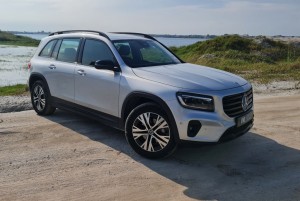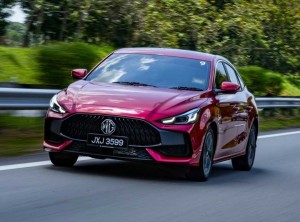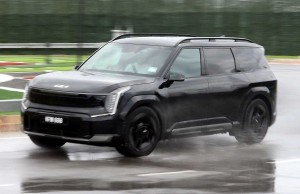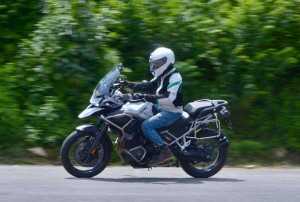PARIS: French car giant Renault had ambitious plans for its wedge-shaped 12 sedan that was launched 50 years ago.
Designed for a huge world market with only minimal changes for each country, the robust, no-nonsense Renault 12 proved to be a big success both at home and abroad.
It was a trend-setter too, and inspired numerous global models from other makers such as the Ford Mondeo and BMW's 3 Series sedans.
The 12 was a car with a reliable front-mounted engine, four doors and pliable soft suspension. It also had a dash of Gallic charm and seats that were so comfortable that the car was nicknamed "the rolling sofa."

This global sedan for the masses stayed in production until late 1980, and even longer in Romania, where it was badged as a Dacia.
Owners loved the 12 and many are still in use today. The world concept was new when the 12 made its debut at the Paris Car Show in 1969. Indeed, many car French experts turned up their noses at the final version of what was dubbed project 117 when work started in 1965. For them it was not stylish enough.
France was famous back then for its supersonic Concorde and the super-fast TGV express train. By contrast, the 12 was rather ordinary, with no avant-garde styling features or the quirky aspects common to Citroens. The 12 stood out in the car park though, thanks to what Renault called its "arrow" shape.
The back-to-basics approach enabled Renault to use a raft of parts from other cars in the range, which helped keep down production costs.
The 12 replaced the boxy Renault 8, which was much smaller inside, and La Regie hoped the fresh, new styling would appeal to motorists around the world.

The standard 1.3-litre engine delivered lively performance, and like many of its contemporaries, the 12 had disc brakes at the front and conventional drum stoppers at the rear. The boot would swallow up to 415 litres of luggage.
The Renault 12 went down so well that Renault had to ramp up production to 700 cars a day only six months after the model first entered showrooms.
The list of export markets is long, but the car was especially popular in North Africa, Canada and in South America, where the 12 was assembled at Ford factories alongside the blue oval's own metal.
The 12 was also put together in Melbourne, Australia until it was phased out. Renault's Turkish offshoot turned out its own version until 1980.
Arguably the most famous Renault 12 owner was Romanian dictator Nicolae Ceausescu. He used a high-end, super deluxe Dacia version popular with dark-suited top communist officials. Ceausescu and his wife, Elena, were executed after trying to escape following the 1989 revolution.
Less-prominent owners ensured that the Renault stayed at the top of the sales lists throughout the 1970s.
The car's chief rival was the Fiat 124. That design was used as the basis for the Lada in communist Russia and its Eastern European satellites. The 12 also competed with Fords, Hillmans, Simcas, Mazdas and Datsuns.

The terminally dull Renault 9 replaced the 12, by which time La Regie had sold around 4 million of the model. The figure includes the Dacia versions.
The French bought the 12 in large numbers, but it was not a common sight on European roads.
Classic car expert Frank Wilke from the German-based Classic Car Analytics database believes the 12's odd silhouette appealed to many owners looking for something different. The car was also easy to drive and well-appointed in standard form.
Standard features included reclining front seats, a cigar lighter, heated rear window and lights for the boot and glove box lights. There were also central armrests at the front and back. Most of the competition levelled a surcharge for such creature comforts.
Performance is modest by modern standards although the kerb weight of just 880 kilograms and decent aerodynamics mean that even the basic L model with a 54-horsepower petrol engine bowls along nicely until it runs out of urge at around 135 kilometres an hour.
The range-topping Gordini engine was not sold in all markets, but the car wore a nifty "go-faster" stripe in white to show other road users that it meant business. The Gordini could top 185 km/h.
Rust has killed off many R12s, but the model is far from being extinct and still boasts a loyal following. Enthusiast Thomas Franzen in Germany fell for a bright green-painted example a few years ago and has never regretted the bargain purchase. He spent just as much on restoring the 12 and now enjoys leisurely excursions perched behind the spindly black, pre-airbag steering wheel.
Heads turn whenever the 12 comes into view, since Renault's world car is now rarer than some Ferrari models. At German classic car rallies, Franzen's R12 is often the only one at the show.
The best examples are to be found in France and prices are low.

A well-turned example of the first-generation 12 should change hands for around €5,000 (RM23,000) while the more exotic Gordini versions can cost four or five times as much.
The solid build of the R12 means that those still left on roads are set to last for a long time to come. Easy assembly at the factory makes the cars ideal for amateur mechanics, and parts availability is good considering the age of most examples.
Romanian enthusiasts are also embracing survivors, and in many of the countries where the "world car" was made, owners hail the 12 as a thoroughly usable old car whose annual maintenance schedule consists of little more than an oil change once a year.












